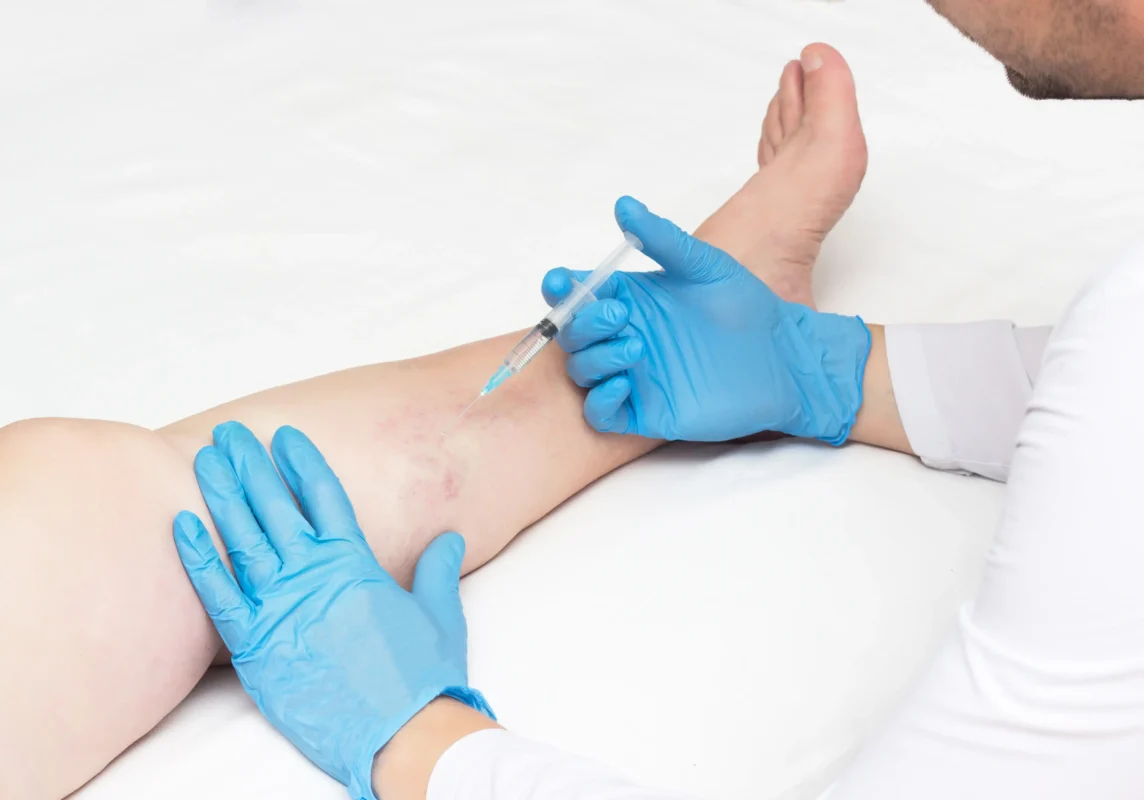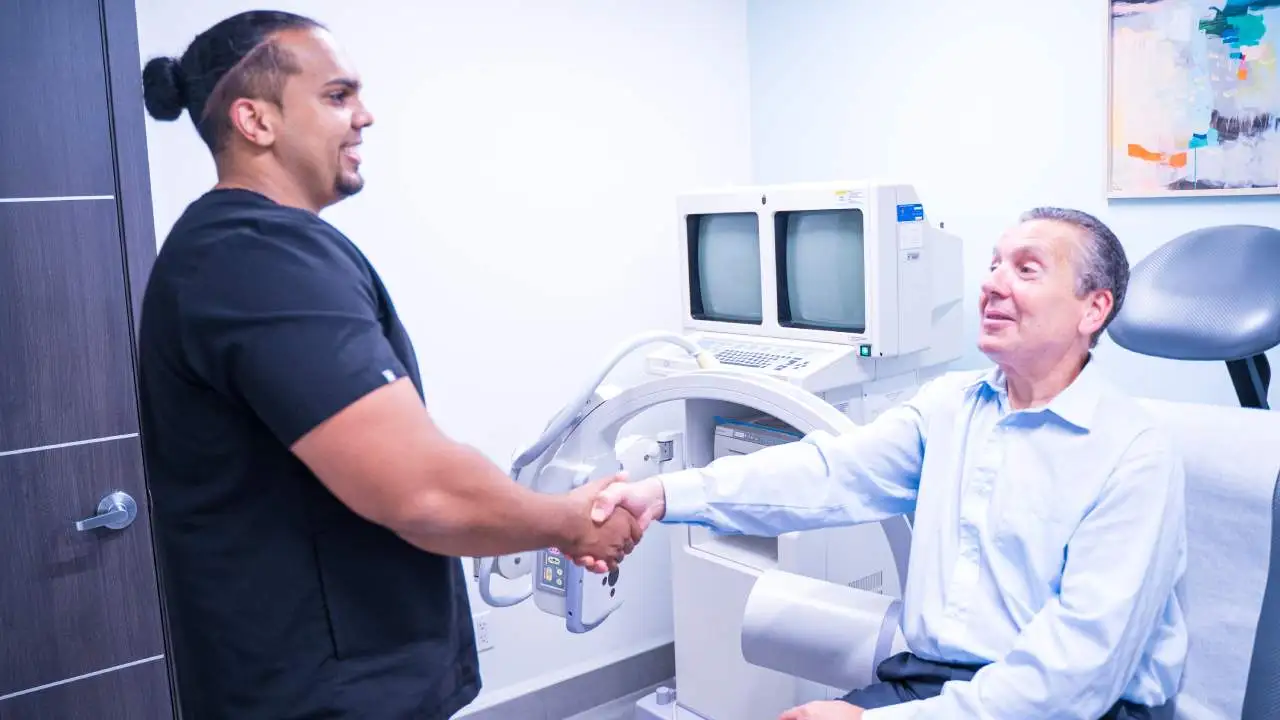The Complete Guide to Endovenous Laser Therapy
Endovenous Laser Therapy (EVLT) is a popular choice for treating varicose veins. It is safe, minimally invasive, and highly effective. Unlike painful, invasive vein stripping surgery that was once the standard protocol for venous disorders, the Endovenous Laser Therapy procedure doesn’t require general anesthesia. No hospital stay is necessary, and the treatment is completed in your vein doctor’s office.

Endovenous Laser Treatment usually takes less than an hour, and little or no recovery time is necessary. Most patients return to their normal activities same-day. Your vein doctor in New York or vein doctor in New Jersey can evaluate your condition to determine whether Endovenous Laser Therapy is right for you.
What Causes Varicose Veins?
The first step in understanding how Endovenous Laser Therapy works is knowing how varicose veins develop in the first place.
Veins play a critical role in moving blood through your body. After the arteries deliver oxygenated blood to your organs and tissues, veins carry it back to the heart. From there it is pumped to the lungs, where it picks up a fresh oxygen supply. However, veins face a number of obstacles. The biggest concern is transporting blood from the lower half of the body to the heart. After all, veins are working against gravity to complete this task.
Healthy veins have a series of tiny one-way valves that open for blood to pass through, then close so that there is no backflow. If the valves are damaged through injury or disease, blood has an opportunity to leak back towards the legs, ankles, and feet. It pools in the lower part of the body, putting pressure on other valves, as well as vein walls. This condition is referred to as venous hypertension.
As pressure grows, veins swell. Over time, they protrude against the surface of the skin, and they take on a knotted, rope-like appearance. When this occurs, they are referred to as varicose veins. Sometimes, unhealthy veins take on a different appearance. They are visible just beneath the surface of the skin in a web of blue, purple, or red lines. These are referred to as spider veins.
The biggest cause of varicose veins and spider veins in the lower part of the body is an underlying vein disease called Chronic Venous Insufficiency (CVI). Unfortunately, this condition often goes undiagnosed, and over time, symptoms get worse. If you are experiencing any symptoms of vein disease, it is critical to see your vein doctor in NY or vein doctor in NJ to ensure your condition is correctly identified, and you receive the right treatment for your specific needs.
What are the Symptoms of Vein Disease?
Varicose veins are the most obvious signs of vein disease, but many patients write them off as an unsightly, uncomfortable, but ultimately harmless nuisance. When varicose veins are left untreated, you may start to notice other symptoms of vein disease. For example, many patients experience swelling and heaviness in their legs, and they may have near-constant achiness. Some people have leg cramps, often at night, and others develop Restless Leg Syndrome.
As the condition worsens, you may notice changes in your skin. This is most common around areas that are already swollen. Skin feels tight and itchy, and the texture changes. Eventually, it becomes fragile and discolored. Minor cuts and scrapes can become serious wounds that don’t seem to heal. If you reach this point, the biggest concern is infection. Open wounds may allow bacteria to enter your body. Skin infections like cellulitis are very painful, and they can be dangerous. In many cases, patients with cellulitis must be hospitalized for aggressive treatment.
How Does Endovenous Laser Therapy Work?
All of the advanced varicose vein treatments have the same goal: to close the unhealthy vein so that blood automatically reroutes through healthier vessels. Endovenous Laser Treatment seal unhealthy veins through the use of targeted laser energy.
When you visit your vein treatment clinic for Endovenous Laser Therapy, your vein specialist begins by applying a local anesthetic to the area being treated. This works to numb the area, so you don’t have discomfort during the procedure.
Your vein doctor will make a small incision near the unhealthy vein. Using ultrasound for guidance, a thin laser fiber is inserted into the unhealthy vein. The laser energy is applied to the walls of the vessel, causing it to permanently close. Blood reroutes through other veins, and the tissue from the unhealthy veins is reabsorbed by your body. In a matter of weeks, you will start to see improvement in the appearance of your varicose veins.
After the procedure, your leg will be wrapped in an elastic compression bandage to encourage healing. In a day or two, your physician will ask you to switch to compression stockings. These promote healthy circulation in your legs, ankles, and feet. You can resume nearly all of your regular activities right away, though you might have to avoid strenuous exercise for a couple of weeks after your treatment.
What are the Side Effects and Risks of Endovenous Laser Therapy?
After the procedure, you might notice some soreness, swelling, and/or bruising around the treated area. Your vein doctor will recommend an over-the-counter pain reliever if needed. These side effects are generally gone within five days of your treatment.
Endovenous Laser Therapy is considered very safe, and risks are minimal – especially when compared to invasive vein stripping surgery. In rare cases, patients have developed infections, bleeding, nerve damage, blood clots, or changes in skin color over the area where the treated vein is located. Your vein specialists will review the risks of each treatment option with you to ensure that your treatment plan is right for your individual situation.
Are There Alternatives to Endovenous Laser Therapy?
Advances in medicine have resulted in a variety of minimally invasive varicose vein treatments that permanently close unhealthy veins. These are some of the other options available to you:
- Sсlеrоthеrару – Uses a medical injection to close varicose veins
- VenaSeal – Seals diseased veins with a medical adhesive
- Radiofrequency Ablаtіоn (RFA) – Relies on thermal energy to close unhealthy veins
- Clarivein – Uses an advanced tool to administer medication for closing varicose veins
- Varithena – Uses a medical foam to close varicose veins
Each has its own set of pros and cons, so it is best to discuss your options with your vein doctor once you have received a comprehensive evaluation.
How Do I Choose a Vein Doctor?
The most important consideration when choosing a physician to treat varicose veins is whether the doctor specializes in venous disorders. While your general practitioner or dermatologist may suggest treatment methods, only a vein specialist has the education and experience needed to give you an accurate diagnosis and a comprehensive treatment plan that uses the most advanced treatment methods.
The Board-Certified doctors at the Vein Treatment Clinic are uniquely qualified to provide you with the highest standard of care. These award-winning professionals are exclusively focused on conditions impacting veins, so they are experts in the field. Visit the Vein Treatment Clinic online to schedule your appointment or call (844) 690-1788 for more information.








